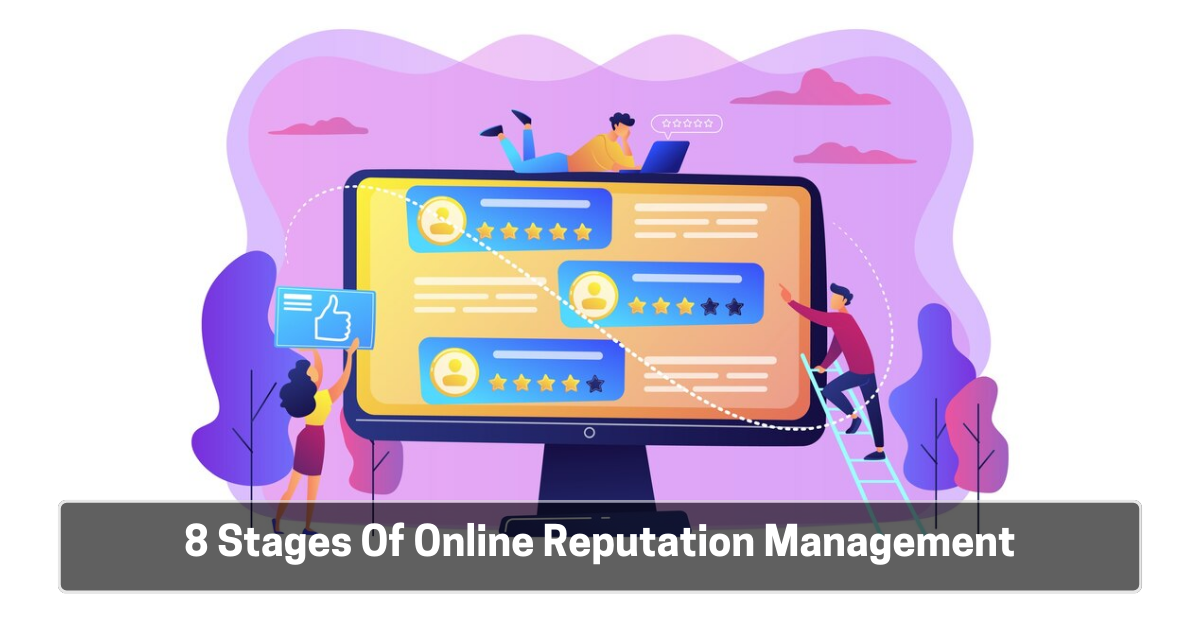8 Stages Of Online Reputation Management

Let’s face it. If you’re online, you will get criticism in one way or the other. And one negative buzz might ruin the entire game for you. Take a look at an example to understand it better. The best way to deal with all the uncertainties is, be prepared for it in advance. In this article, we have jotted down 8 stages to make you prepared for any online crisis.
1. Always be ready with a plan: No online crisis would take place with a prior notice. So, you need to be prepared with a full-proof plan. First, consider your business and identify the possible crisis areas. For example, if you are an eCommerce business owner, you may face an unhappy customer’s rage for different reasons like damaged product, delayed delivery etc. You need to know beforehand how to handle each situation.
2. Listen to what people are saying: The first way to avoid any big crisis online is, you need to be monitor the web 24*7. There are tools to do that. You just need to set the keywords that you want to monitor online and off you go. These tools would give you periodical updates about any online occurrence for keywords set. Tools like Google Alerts are pretty effective to monitor your online footprints. And if you want to monitor on an advanced level, tools like HootSuite, Social Mention, Mention, Topsy would also work for you.
3. Acknowledge that you have seen it: Once something negative occurs, acknowledge it immediately. Don’t ignore or delete it, because if the angry customer finds it, he would start searching for other platforms to vent out his dissatisfaction. According to a study by Lithium, 60% of Twitter users took a negative action against a brand that did not respond to their concern within a considerable time.
These are the activities that an average Twitter user does when he does not hear from a brand within the desired time frame. The best way to deal it is, acknowledge it as soon as happens, no matter if it’s a sarcastic comment or a serious product or service issue.
4. Offer a definite solution: Only acknowledging to the concern will not do. You need to know about the exact root of dissatisfaction, else you cannot provide with a solution. For example, if you did something wrong, it’s always better to rectify your deed and offer compensation for the inconvenience caused. On the contrary, if you find that there is only a confusion, you need to explain the right thing to the concerned person.
5. Try to take it down as soon as possible: As an online marketer, you always should try to remove negative footprints off the space. This is the most crucial job for an online reputation manager. Start doing it from the third stage (The Acknowledgment Stage). Ask for the person’s mail id or phone number to quick fix the issues.
Once you would personally contact the person and primarily deal with his concern successfully, he would stop venting out his anger on the web. But if you don’t offer him a definite solution in the next phase, he may again start creating negative buzz about you on the web. These 2 stages are very important for online reputation management. And the fifth stage is that phase when you can actually win a happy consumer out of an angry one.
6. Be true to yourself: While offering the solution to the issue, make sure they are doable on your part. Don’t promise something that you can’t deliver within the promised time. If you do that, be ready for another negative buzz. And this time, it would be harder to deal with.
7. Ask for removal: Once you solve the issue, you can always ask the customer to remove the negative comment about you. But if he does not look comfortable with it, don’t force him to do it. Rather offer an incentive that would interest him to write a good comment about you. Positive buzzes will always help you overpower the negative digital tattoos. You also could use them as testimonials.
8. Follow up after a while: Once the issue is resolved and the client is still happy with you, make sure to follow up with a quick call or a brief mail. This would show your sincerity to serve your customers better. Moreover, even if the customer does have some concern, he would share it with you immediately without making any digital call. It would help you keep your digital space as clean as possible.

